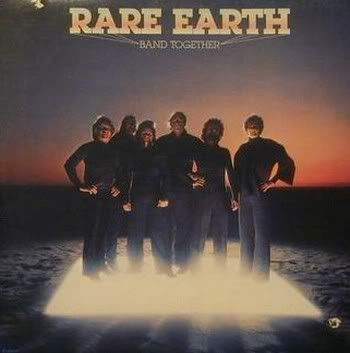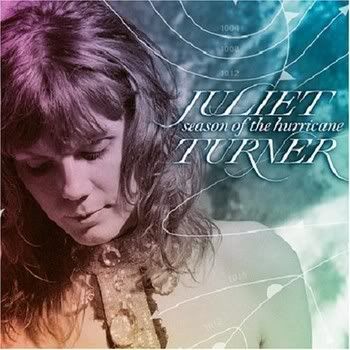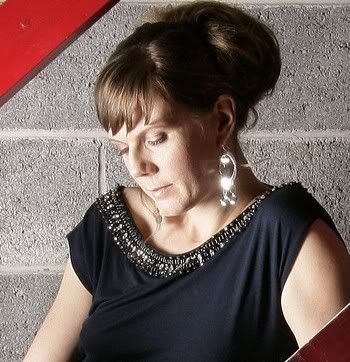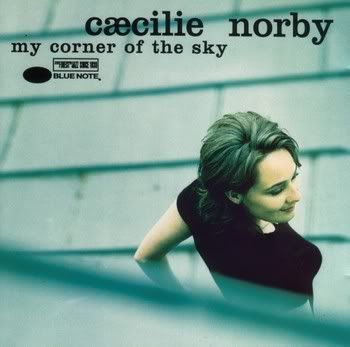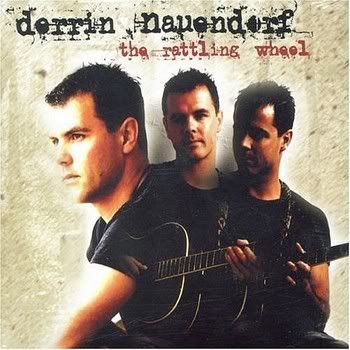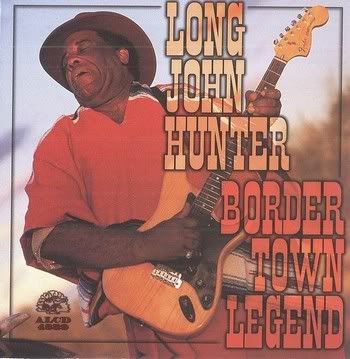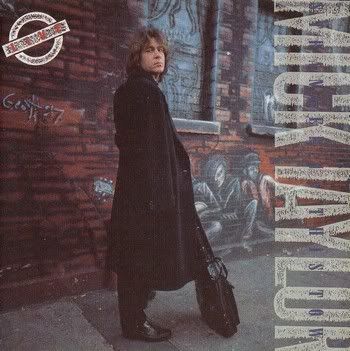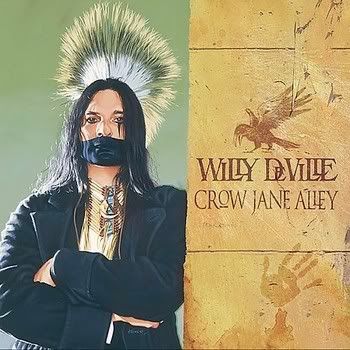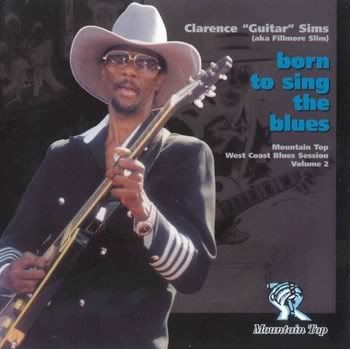
Sonia Dada - Lay Down and Love It Live - 1999 - Calliope Records
Sonia Dada are Shawn Christopher, Paris Delane, Michael Scott, Phil Miller, Dan Pritzker, Chris Hambone, Erick Scott, & Hank Guaglianone. For such a group of gifted and talented musician, it is anazing that the Chicago based Sonia Dada have not received more commercial success. They are relatively well known Stateside, and have a substantial Australian following, having sold out 19 concert dates on one tour. This is a great live album of blues-rock, rhythm and blues and soul, with a touch of gospel, and is HR by A.O.O.F.C. Recorded live in Colorado and California between November and December 1998, the album has an exciting and exuberant feel. Great vocals and playing, especially from the four piece horn section . Listen to 'Lester's Methadone Clinic" Great stuff! Many of the tracks were written before 1998, and are probably Sonia Dada's best compositions. Buy their brilliant 2002 "Barefoot Soul"album, and give this great band the credit they deserve.
TRACKS / COMPOSERS
Planes & Satellites - Dan Pritzker, David Resnik
Lester's Methadone Clinic - Dan Pritzker
I'm Gone - Dan Pritzker
Never See Me Again - Dan Pritzker, David Resnik, Erik Scott
Amazing Jane - Dan Pritzker
You Ain't Thinking (About Me) - Dan Pritzker
Anna Lee - Dan Pritzker
Last Parade (Crazy Lady) - Dan Pritzker
Phases Of The Moon - Dan Pritzker, David Resnik, Erik Scott, Bubbles Cameron
Don't Go (Giving Your Love Away) - Dan Pritzker, David Resnik
You Don't Treat Me No Good - Dan Pritzker
I Want To Take You Higher - Sylvester "Sly Stone" Stewart
Goodnight - Dan Pritzker
MUSICIANS
Shawn Christopher, Paris Delane, Michael Scott (vocals)
Sam Hogan (vocals)
Phil Miller, Dan Pritzker (guitar)
Chris Hambone (piano, Hammond B-3 organ)
Erick Scott (bass)
Hank Guaglianone (drums)
Ken Partyka (saxophone)
Bob Perna (trumpet)
Tony Wolters, Jim Martin (trombone)
REVIEWS
There is a certain excitement that you feel when you are about to experience something for the first time. Seeing a movie when you haven't heard any hype, seeing two little league teams battling for bragging rights instead of trophies, or listening to a disc of a band that you've never heard when you have never even heard a description of the music. It was with this type of excitement that I dove into the "lay DOWN and LOVE it LIVE" disc by Sonia Dada. I was left like the child spectator pictured on the back cover- mouth agape and staring in wonderment at this new marvel that I had just discovered. There are certain key components that distinguish a high quality collection of music: Composition, orchestration, execution, and artistry must all combine to form a whole new entity. In each of these aspirations, Sonia Dada excels, foretelling their future as music ambassadors to the soul. Perhaps the most striking quality of this collection is the superior compositional style of this band. Songs are tales- communicating settings, characters, and plots. The lyrics seem not to be sung as much as lines that are delivered into the setting laid out by the music. These songs seem to be more closely related to the music of the first half of the century when Broadway and Folk defined the musical consciousness of the people. Lester's Methodone Clinic is a perfect example. When you have finished consuming this song, you feel as if you have been transported into a story, whose scenery and texture are palpable. Your mind easily pictures the sound, visualization. You feel familiar, though not comfortable, with the surroundings. These songs have a universal appeal that extends beyond any particular genre and reaches into the hearts of music lovers. No less striking is Sonia Dada's ability to fill the confines of this disc with vibrant and rich sound. Whether through the penetrating subtlety of a percussion triangle in the aforementioned Methodone Clinic or the classic funk styling of Never See Me Again Sonia Dada continually impress with their command of the band's sound. These sounds smoothly rove from standard rock formulas to Gospel spirituals, from Grateful Dead-inspired improvisational intros to horn driven R&B. If it were not so seamless and crafted, these musical shifts would blind you. Full steam ahead vamping gives way to the soulful ballad of Amazing Jane. Given the quality of the composition and orchestration, it is no surprise that the talent driving the performance is of the highest caliber. Most striking is the evocative and agile vocal work, supplied by Shawn Christopher, Paris Delane, and Michael Scott. I am used to three-part vocal harmony, but the depth and spirit of these voices genuinely lifted my expectations and set a new standard for vocal quality. Paris Delane has a soaring voice that has the heft and weight that I had only seen in the greats: Aretha, Janis, and Ella. There is a bass vocalist, and I am not certain if it is Christopher or Scott, that has the ability to freeze the listener. I have never heard a bass vocalist of this quality off of a theatrical stage. And the male lead vocal is attention grabbing and exciting in the front, driving the melodic center of the songs. For fear that I am not including the excellent instrumental abilities of this band, I must mention that the rhythm section of Larry Beers on drums, Erik Scott on bass, Chris Cameron on piano and B3 is supportive and steady. A pocket is created without drawing attention too heavily away from the song. This cradles the performers and the listener equally. The Persistence Horns and the guitar duo of Phil Miller and Dan Pritzker round out the sound, supplying all of the kick and pomp that is necessary in music as genuine as this. All of this talent would be wasted, were it not directed and nurtured into an original musical vehicle with purpose and energy. Thankfully, Sonia Dada is artistic enough to really sculpt this sound into a collection that is diverse and yet focused. Fusing elements of literally dozens of styles (Doo-Wop, Folk, Southern Rock, Funk, R&B, Motown.. it is a never-ending list) Sonia Dada creates music that defies style and genre classifications. That this music inspires joy and sadness is unquestionable. The listener is so comfortable with this stylistic baptism that even a cover of Sly Stone's I Want to Take You Higher is no shock. It rolls off the tip of this album's tongue without a stutter or slur. "Lay Down and Love it Live" will leave you stunned. It stands up to a continuous listen as well as the random shuffle with equal excellence, further illustrating the quality of the songs. Rarely does modern music become Art worthy of the attention of future and present generations alike. Rarely do artists ascend so brilliantly into stardom while still strolling among us. Do yourself a favor- experience this album, experience Sonia Dada. © Phil Simon, www.jambands.com
Live recordings can have a way of separating the men from the boys and the women from the girls. Bands that are short on talent, chops, or substance might be able to hide behind technology when they're in the studio, but when they take it to the stage, their weaknesses become painfully obvious. But if a band is as substantial and as meaty as Sonia Dada, it doesn't need studio gloss to sound great -- and make no mistake, Sonia Dada sounds great on Lay Down & Love It Live, the Chicagoans' first live album and fourth album overall. True, an artist can use studio technology to "improve" an inferior live recording, but Lay Down never sounds artificial. The band's vitality comes through loud and clear on this CD, which contains mostly post-Sam Hogan recordings from 1998 (including a sweaty cover of Sly Stone's "I Want to Take You Higher") but also boasts three 1996 performances that were made before the singer's departure: "Goodnight," "Never See Me Again," and "You Ain't Thinking (About Me)." Without or without Hogan, Sonia Dada sounds consistently focused and never comes across as superficial. Recalling such soul/rock groups as Ike & Tina Turner, Sly & the Family Stone, and the Neville Brothers, gems like "Anna Lee" and "Amazing Jane" take us back to a time when artists lived for the stage and went that extra mile for audiences. Lay Down & Love It Live may very well be Sonia Dada's most essential release of the '90s. © Alex Henderson, All Music Guide
BIO
Sonia Dada, an eclectic, exciting genre bending rock & roll group, was born in the spring of 1990. Like their labelmates the Freddy Jones Band, they are based in Chicago. The members take their songwriting inspiration from their experiences in that city as well as on the road. One day in 1990, songwriter-guitarist Dan Pritzker got off a subway train and heard the three-part harmonies of Michael Scott, Paris Delane and Sam Hogan. Pritzker had already been working with a group that consisted of his long time friends, guitarist Dave Resnik, drummer Hank Guaglianone and bassist Erik Scott. The three singers joined the quartet, and Sonia Dada had a new lineup: Paris Delane, vocals, Sam Hogan, vocals, Michael Scott, vocals plus the original four. Shortly after they began rehearsing in earnest, they added keyboardist Chris "Hambone" Cameron. The band has released two albums for Capricorn, Sonia Dada, (1995), their self-titled debut (originally released on Chameleon/Elektra Records) exceeded 100,000 in sales and spurred a minor radio hit, "You Don't Treat Me No Good.'' A Day At The Beach, their follow-up, released in March, 1995. The group's intoxicating blend of blues-rock, rhythm and blues and soul music won them fans in faraway places like Australia, and led to the international touring schedule they now maintain. When the group toured Australia, they sold out all 19 concert dates, and in 1994, they opened 40 shows for Traffic while headlining some large clubs and theaters around the U.S. Songs like "Deliver Me" and "We Treat Each Other Cruel'' are soul-gospel-rock celebrations that feature creative arranging and the messages that appeal to the audience for adult rock radio. The songs on Day At The Beach continue the band's genre-fusing traditions, with tracks like "Lay My Body Down'' recalling the gospel-rock mix of their debut record, and the single from the album, "Screaming John,'' which showcases a memorable melody, good harmonies and crafty lyrics. On their second album, the band continues the grooves laid down on its first record, adding funkier rhythms and melodies. My Secret Life followed in 1998, and a year later Sonia Dada returned with Lay Down and Love It Live. The richly layered soul album Barefoot Soul appeared in 2002. In 2004 they released the ambitious Test Pattern, a richly atmospheric collection of material that included a bonus DVD of multimedia centered around two short films by director and cinematographer Jeth Weinrich. © Richard Skelly, All Music Guide


